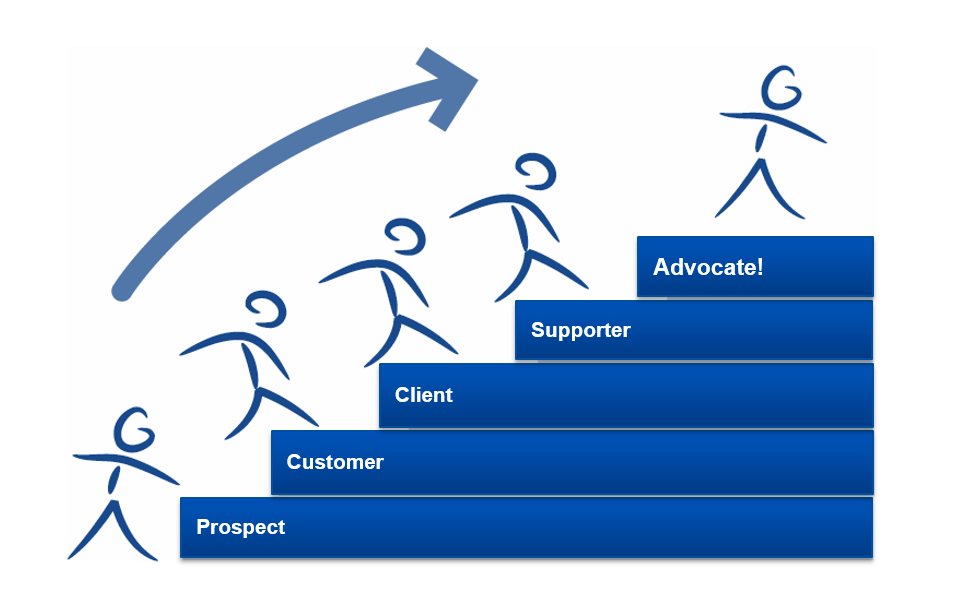While loyalty programs traditionally focus on transactions (purchases, redeeming points, and rewards), it is becoming increasingly important to focus on interactions in managing profitable customer relationships.
Customers are known to increasingly use social media, peer-to-peer communication, recommendation platforms, and comparison services as part of their customer experience. Companies that recognize the connection between social interactions and customer satisfaction are best positioned to leverage non-transactional behavior and interactions, e.g. for generating positive word of mouth.
Word of mouth as such is not new. Recommendations have always been important for a person's buying decision (e.g. converting non-customers to customers). However, what many do not know is firstly "word of mouth" leads to "customer advocacy" and secondly "customer advocacy" has been proven to increase sales of existing customers (incremental sales). This is what makes this customer engagement strategy so powerful.

What is customer advocacy?
Customer advocacy is a Customer Relationship Management (CRM) activity with a strong Customer Experience (CX) component that turns customers into advocates ("evangelists" or "fans") of a company. In other words, advocates are the most valuable multipliers who attract, engage and influence additional customers (peers) – and do so without incurring additional acquisition or marketing costs for the company. Advocates are comparable to customer-facing employees, but without being on the payroll.
What are the benefits of customer advocacy?
Studies by Bain & Company, London School of Economics (LSE) and especially the groundbreaking study by Paul Marsden ("Advocacy Drives Growth", 2005) have shown that advocacy demonstrably improves the Net Promoter Score (NPS) – a metric measuring customer loyalty – and that a higher NPS correlates positively with sales growth in the following year. Patrick Campbell, an ex-economist at Google, also outlines in his article "NPS correlates with Expansion Revenue" (Profitwell, July 2020) that satisfied customers buy more.
Where can advocates be found/recruited?
1% of all customers are potential advocates
Every company has its own advocates. Even a heating oil company in the B2B SME sector or a debt collection company in the financial services sector have advocates. According to Jakob Nielsen's "90:9:1 rule", 1% of all customers are potential advocates, i.e. 1% are willing to actively promote the company of which they are a customer, 9% do so occasionally, and the rest follow passively. For companies, this is an important asset that is worth using systematically – preferably with a strategy.
What activities drive customer advocacy?
How can companies turn customers, clients, or consumers into referral advocates?
Based on the findings of Paul Marsden, there are eight strategies that have proven successful in identifying and generating advocacy.

These initiatives range from directly activating customers to engage other customers (e.g. referrals, forums, trend scouts), to involving customers in the development of new solutions (e.g. user-generated content UGC, tryvertising), or to provide an extended reason to stay engaged over time (e.g. causal campaigns, innovative value-added services) – supplemented by the measurement of advocacy (advocacy tracking), as a direct pulse check with the client.
Many companies have already implemented some of these initiatives. Unfortunately, they are often isolated in a loose, rather random not strategic context. They are not subject to Key Performance Indicator (KPI) targets to measurably increase customer loyalty, customer experience, and customer value. We see a lot of untapped potential here.
In summary
- Advocacy specifically improves the company's Net Promoter Scores (NPS)
- Higher NPS promotes more loyal customers and generates profitable growth
- Strategies for effective engagement of promoters are key to unlocking the full potential of value creation through advocacy





